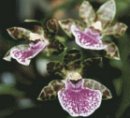 |
| BOT 3800 Sample Quiz 3 | |||
| Place the proper letter in the space to accurately indicate the chromosomal status:
__ 1. corn (maize)
A. 2n or diploid 7. Units found in grass spikelets but not in the florets are: (A) lemmas, (B) paleas, (C) stamens, (D) glumes, (E) awns or beards. 8. According to Klein, which area produces most of our durum wheat: (A) California, (B) Texas, (C) Kansas, (D) Washington, (E) North Dakota, (F) Pennsylvania. 9. Milled, polished white rice consists almost entirely of: (A) bran, (B) germ, (C) endosperm, (D) embryo, (E) lemma. 10. The original home of the sugar beet was: (A) Germany, (B) Iran, (C) Iraq, (D) China, (E) Turkey, (F) Egypt, (G) Hawaii, (H) Brazil. 11. Teosinte is related most closely to: (A) durum wheat, (B) bread wheat, (C) rice, (D) corn, (E) sorghum, (F) sugar cane, (G) sugar beet. 12. Wheat germ is technically: (A) seed wall, (B) fruit wall, (C) endosperm, (D) embryo, (E) micro-organism (bacterium) always associated with wheat. 13. The most important wheat grown in eastern U. S. was developed at: (A) Little Rock, AR, (B) Orlando, FL, (C) Quincy, FL, (D) Athens, GA, (E) Nashville, TN, (F) Chicago. 14. Which term most correctly describes the reproductive system for corn: (A) bisexual, (B) monoecious, (C) dioecious, (D) absent. 15. Flour for pasta and spaghetti comes from which form of wheat: (A) emmer, (B) einkorn, (C) spelt, (D) triticale, (E) durum, (F) goatgrass, (G) teosinte. |
|||